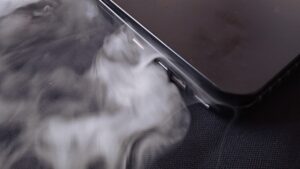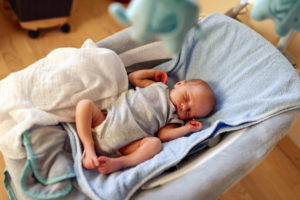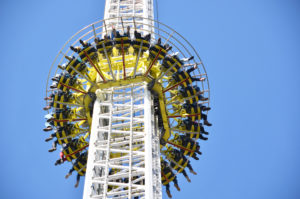On Monday after a three week trial an Orange County Jury of 3 men and 3 woman deliberated for about 3 hours and Answered "NO" to the following question submitted to them: "Was there a dangerous condition on the tower ride called Tower of Terror on March 28, 1998, about which the Walt Disney World Co. either knew or should have known, by the use of reasonable care?."
The case related to a claim by an 80 year old man, that in 1998, as a result of riding the Tower of Terror ride he suffered a tear in a brain artery resulting in a debilitating stroke that manifested itself a few weeks later.
The Plaintiff’s attorney claims that the Trial Judge made rulings that prevented the jury from ruling on the adequacy of the warnings on the ride. It is notable that the Jury’s response to the question above never answered if the ride caused the stroke and if so, whether the warnings were adequate to inform customers using the ride that they may suffer a stroke from using the ride.
Florida law provides many protections to the theme parks in ride injury cases. For example, the Jury here could not evaluate the ride under a product liability standard of strict liability that would be applied to say a Toyota claim. Instead the theme park rides are not deemed products and so they are held to a much higher negligence standard. Further, unlike in California’s Disneyland, the rides here are not considered by Florida Courts to be instruments of common carriers and so a lower negligence standard is used to evaluate the ride than would be used to evaluate the operation of a train, plane or even a passenger bus.
The jury may have felt that the ride did not cause the injury or that the ride was safe. They may have felt that ride had acceptable levels of danger, or that everyone has personal responsibility for the risk of injury when they get on a theme park ride. On the other hand, if the jury was properly instructed and heard evidence about the strict liability standard held to products or the extremely careful person standard held to common carriers then perhaps the result would have been different. We also know from previous posts here that the theme parks are not subject to State or Federal inspections and have minimal to no reporting requirements for injuries to customers. An Orlando Sentinel study evaluated 101 ride- or attraction-related lawsuits filed against the major theme parks and only a very small fraction of the injuries or deaths were ever reported to the State. So if prior claims of injury on the rides were made known to juries would the rulings be different?
If the rides are truly safe, if they are not causing strokes or other severe injury and death then why hide behind legal defenses. Why hide the facts of other injuries from the jury? Why don’t the theme parks come clean and publicly report every injury or death to a customer allegedly related to a ride. If the rides are safe then why hide behind legal loopholes and not hold the ride to the same standard of conduct as a car or bus? Until this happens we can’t be sure the rides are safe, we can just be sure that the parks have better lobbyists than consumers.










6 Comments
C Lavin
Companies have shown repeatedly that internally product liability issues are hard to manage. This example related to Disney, but companies across all industries sometimes act in a similar manner. When I see CPSC recalls with close to 100 incidents prior to the recall, one wonders why it took so long. For more statistical recall information based on the most complete product recall database in existence, see http://wemakeitsafer.com/RecallStatistics.html
Bob
Glad to see the ambulance chasing lawyers lose another one!!!!!!!!!
The rides is safe and has given millions of riders alot of enjoyment and glad lawyers wont be able to prevent this by baseless lawsuits.
The layer who presented this case SHOULD be forced to pay Disney costs associated with this case to prevent similar baseless lawsuits!!!
Jane Akre
Bob-
Did Disney post warnings outside of the ride advising those with heart conditions, with fragile bones, over a certain age, with pre-existing conditions etc, not ride the Tower? If not, why not? Don't you think the public has a right to information so they can make an informed decision about whether they want to ride the Tower? Doesn't that apply to all consumer products - don't we have the right to be informed?
William Eadie
Thanks for the interesting article and questions. I'm not sure how I would feel about a strict-liability products standard for a ride (I would have to consider the issue more fully), but certainly the common-carrier metaphor is directly applicable.
Bob, you might want to investigate your sources of information. The tort-reform mongerers who peddle the “frivolous lawsuit” nonsense have two goals: (1) reduce the cost of doing business for corporations, who provide campaign contributions, by allowing them to avoid the consequences of unsafe practices; and (2) de-fund the Democratic party by reducing income to plaintiffs’ attorneys, who typically support the party, by limiting the recovery of people who are injured. I’d venture to guess that you are not a big-wig corporate insider or running for office as a national Republican. So, you are essentially making an argument on behalf of the very group that would like to avoid responsibility in the event that they injure someone just like you, at the behest of a group that wants to get re-elected by catering to that same group at your expense.
The interesting part is that you’re getting upset by the process actually working: if the lawsuit was baseless, the system worked by finding against the plaintiff. That’s how it should work, with the issues are decided according to the rule of law. Tort reform is not about improving this process, it’s about reducing access to the process from people who do not have a lot of money. The simplest way to reduce the cost of lawsuits is simply to reduce unsafe practices, like medical malpractice: http://www.thepoptort.com/2010/04/the-most-obvious-medical-malpractice-solution-in-the-world.html
Bob
The system would work if the losing side had to pay all the costs incurred by the winning side. That is one of the more certain ways to stop frivolous lawsuits like this one!!!
Since I have ridden this ride numerous times, I have seen the signs that warn people of the type of ride it is, and it is more than sufficient to warn people of the type of ride they are getting on, and if they are concerned then they shouldn't ride it.
If signs were posted like the one suggested, it would take away all theming to the ride, and any sign would somehow be found deficient by a lawyer trying to make money from a big company like Disney.
William Eadie
Bob,
When a case is truly baseless, courts can and do award attorney's fees to the other party. Of course, just because the plaintiff in a case loses doesn't mean they had no good-faith basis for the claim, nor is there always a "winner" in a case (sometimes, for example, a defendant is held liable on only one of multiple claims, or is held only partially liable, while the plaintiff is assigned part of the blame). So always paying the costs of the "winner" wouldn't work, nor would it be particularly fair.
It might prevent legitimate claims from getting to court, by making them more risky, which is why big business interests would advocate for a simple "loser pays costs" rule.
Comments for this article are closed.